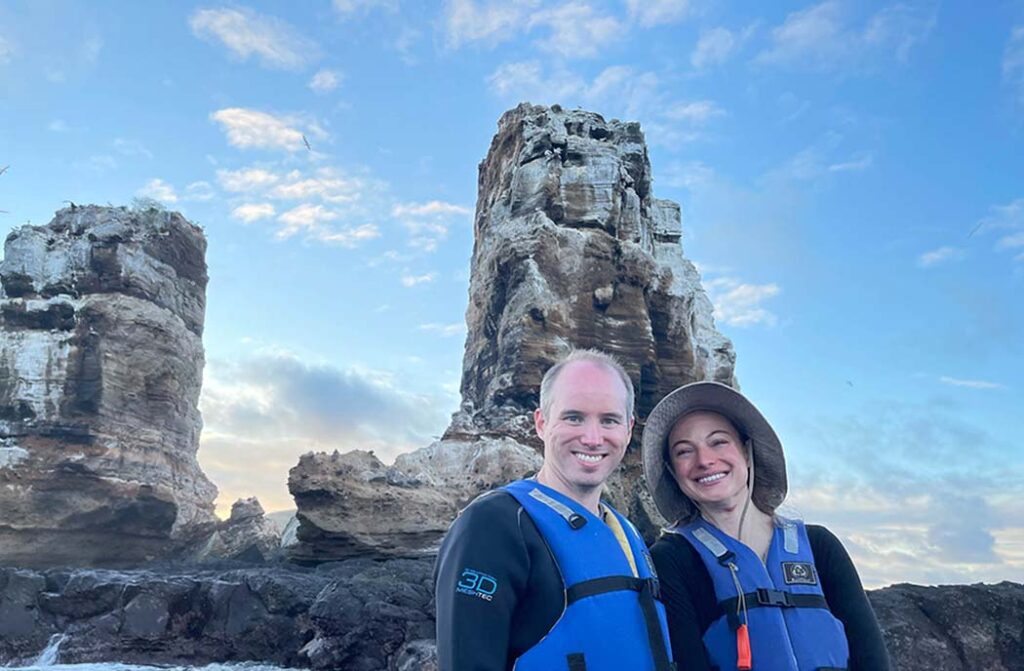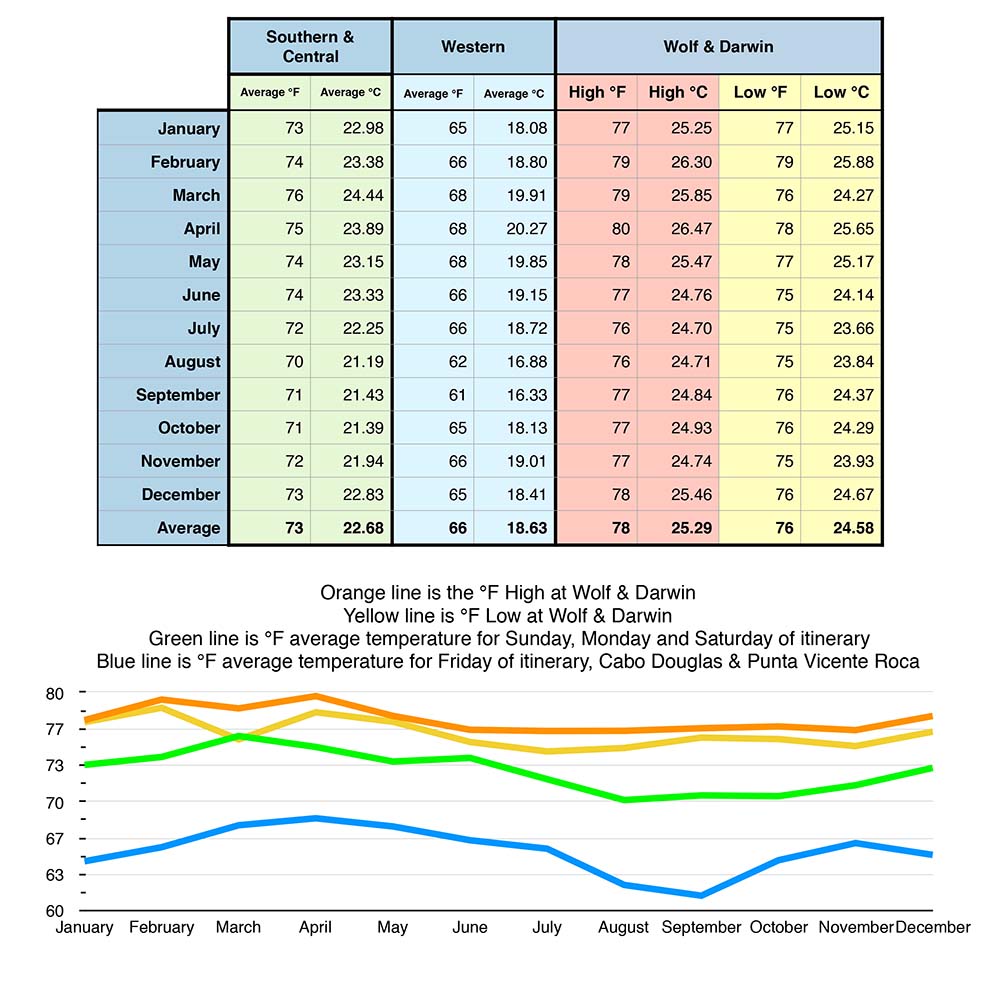Galapagos Diving
The Galapagos Islands are home to the highest concentration of sharks in the world! Galapagos Sky brings divers to the best dive sites in the Galapagos Marine Reserve, which are only accessible by liveaboard. Year round divers experience the magic of schooling hammerheads, penguins, endemic marine iguanas, Galapagos sharks, large pods of dolphins, thick schools of skipjack and yellow fin tuna, big eye jacks, mobula rays, silky sharks, white and black tip sharks, sea lions galore!, chevron barracuda, snappers, rainbow runners, and wahoo. There are also a lot of smaller fishes like creole fishes, parrot fishes, scrawled filefishes, pacific box fishes, and tiger snake eels. With regular sightings of mola mola (oceanic sun fish), sea horses, bullhead sharks, red lipped bat fish, various shrimp and many other marine invertebrates. The biodiversity in the Galapagos makes for world-class diving that many divers consider the best dive destination on the planet.
When To Go and Water Temperatures
Diving in the Galapagos is truly dynamic year round. Most divers plan their best-time-to-go around the water temperatures in the Galapagos.
Water Temperatures fluctuate through the year. Water temperatures are typically warmer in the northern islands at Wolf and Darwin and cooler in the western, southern, and central islands of Galapagos.
December-May: Wet season. Manta season. The water is warmer, clearer 65-80°F,18-27°C
June-November: Dry season, Whale shark season. The water is cooler, 60-77°F,15-25°C

There is no wrong-time for Galapagos!
Water Temperature Information
Thermoclines are common in Galapagos. Divers should be prepared for the water temps listed for all areas: Western, Central, and Wolf & Darwin in the north.
Historic Water Temperature Average

